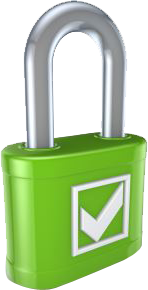Tradesman Safety
Personal safety is imperative and inevitably through the process of business interactions, you may encounter a customer who presents in a non - idealistic manner. How you and your team behave can help reduce the risk of aggressive and violent behaviour.
This section is here to assist you with personal safety, integrity and professional demeanour if presented with a verbally or physically challenging customer.
Right or wrong, many angry people believe three things:
• Their situation is unfair.
• The situation is out of their control.
• They are the victim in this situation.
Risk assess the environment before arranging a visit or accepting to undertake a job
One person is not the example of all, but if an initial conversation over the telephone with a customer gives you a sense of unease - you don't have to arrange to quote or take on a job. It is fine to advise a customer you are unable to accept a job, handle it in a professional manner and think about a valid reason for not accepting an opportunity to quote or a job.
Dealing with verbally aggressive customers
If you sense whilst on a job that a situation has "turned" - bear in mind the following techniques:
Manner
Always maintain a polite and professional manner during any exchange with a customer. If you are sworn at or exposed to personal attacks on your character, resist the urge to retaliate.
Explain
Ask the abusive customer to calm down in a respectful manner and explain that you're there to help. Tell them it's going to be more difficult to resolve the issue while tempers are flared and that you're more likely to be able to address any concerns if any discussion is conducted in a civilised fashion.
Empathise
Tell your abusive customer that you can understand their frustration and that you would be upset if you were in their position - if they have a valid complaint. If you feel that their complaint is spurious, empathy will not be necessary.
Honesty
Be honest about what you can do. If you're unsure about how to deal with the complaint, don't try to bluff your way through the situation; this will only serve to enrage your customer further.
Refer to Policies
If a customer is complaining about an issue that's covered in any contract you have with them, respectfully refer the customer to the clause that supports your position. Then, politely explain that it was their responsibility to review the terms and conditions of your relationship before entering into any agreement.
Issue a Warning
If your customer repeatedly uses foul language and/or threatens you, advise them that you do not have to, nor will you, tolerate being spoken to in such a manner. Explain again that you are there to help, but warn them that you will terminate the call if you're on the phone or that you will leave if they do not calm down.
Silent Treatment
Don't try to talk over or interrupt your abusive customer when they are in mid-flow. This is only likely to make the customer angrier. Let them finish what they are saying. If this involves a long, drawn-out rant, so be it. Remain silent for a few seconds after they have run out of things to say and then state your position. If the customer interrupts, tell them that you have listened carefully and would be grateful if they could extend you the same courtesy.
Terminate the Conversation
If all else fails and you're unable to get through to your abusive customer, end the discussion. If you're on the phone, explain politely that you feel you can go no further with the conversation and that you're going to hang up. If you're dealing with the customer face to face, then leave the premises.
Be assertive: firm but fair
Physical Violence
Physical violence is never ok and is not to be tolerated.
If the situation is becoming violent then you should get help as soon as possible, for example by calling the police or security. You should warn the individual of your policy regarding violence and let them know it is your policy to take legal action against such behaviour.
Studies have shown that if someone is going to attack or become physical it will occur in the first 2 minutes of the encounter. During this time frame you want to be within 4-6 feet of the angry person. Close enough for them to see that you are interested in helping, but far enough away so they can't reach you if they lunge forward. After these first couple of minutes you can usually move someone to a neutral environment where you can actually address their concerns.
If you are robbed, co-operate but do not do more than requested. Avoid turning away from the attacker or making sudden movements.
Any suggestions or acts of physical violence should be reported as a crime to the Police, as it is a threat against your personal safety.
Warning Signs
The most likely warning or dangers signs are:
The Person is:
Dealing with Telephone Aggression
• Be patient, the abusive language may abate, once the caller has vented what they want to say.
• If the caller does not calm down, advise them clearly that, unless they are able to continue the discussion in a civil manner, the call will be terminated.
• Do not put the receiver down immediately.
• Do not become upset.
• Do not lose your temper.
• Do not be tempted to react with a similar response.
• Do not take remarks personally.
• If, after giving a warning, behaviour does not improve, then you may terminate the call.
• All calls of this nature should be documented so the incident.





 100% secure - we never share your email
100% secure - we never share your email



